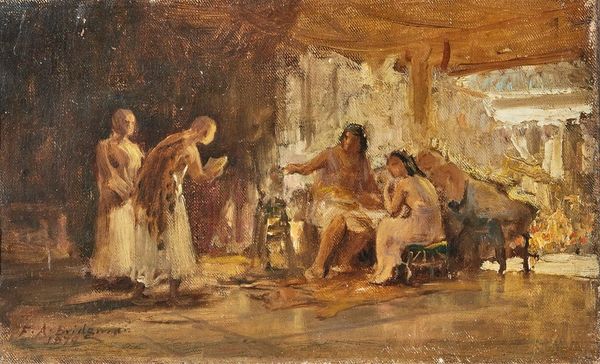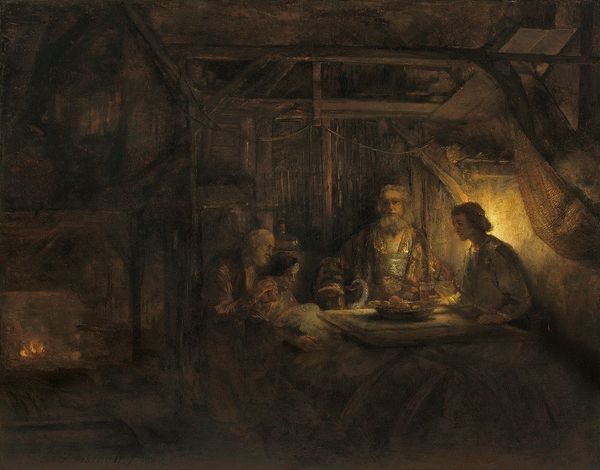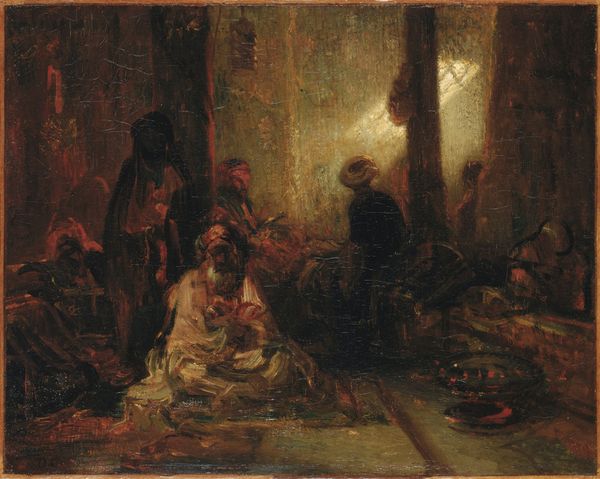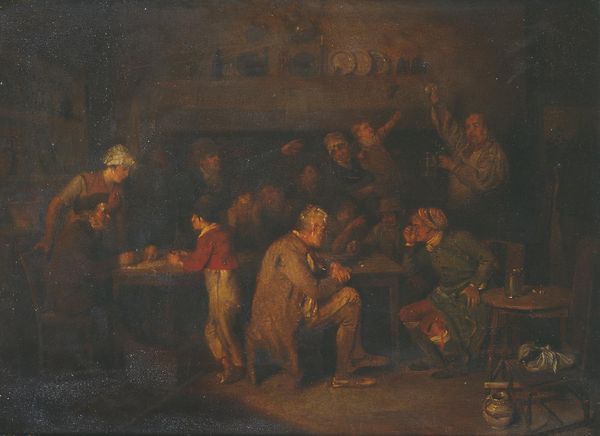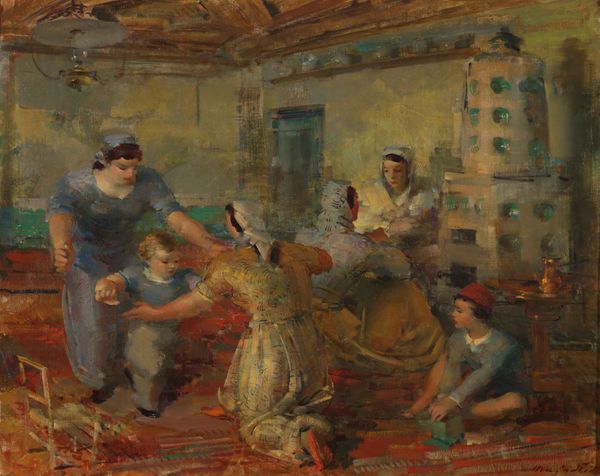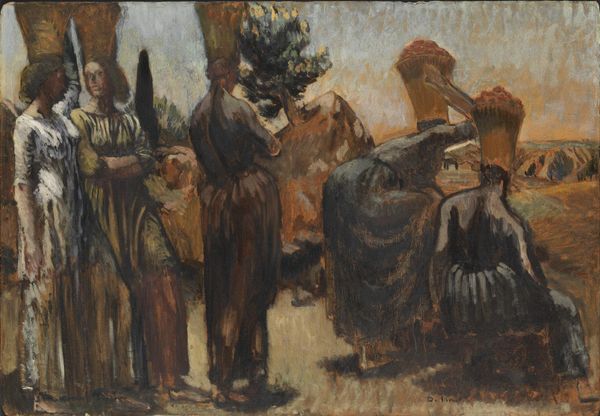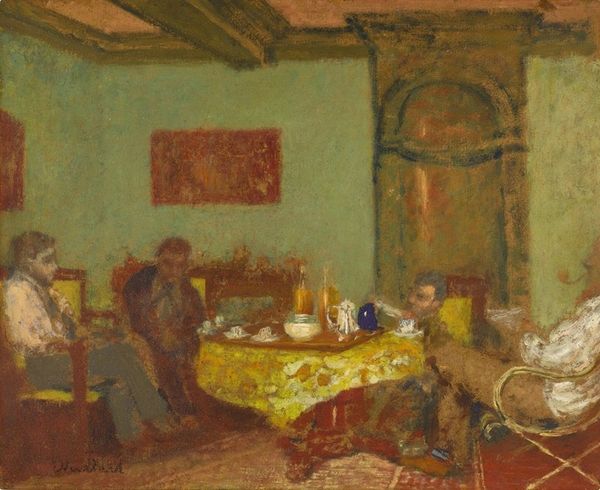
Copyright: Public Domain: Artvee
Edward Mitchell Bannister painted "Salome Receiving the Head of John the Baptist" in 1890, using oil on canvas. The earthy, muted tones give the scene a somber, almost claustrophobic atmosphere, emphasized by the composition's density. The weight of the narrative—Salome's infamous request—is visually palpable. Bannister's brushwork, though not invisible, blends forms, creating a sense of veiled meaning. This blurring challenges traditional, clear-cut interpretations, inviting viewers to question the moral and psychological states of the figures involved. The subdued palette and textured application of paint serve to destabilize any heroic or celebratory reading of the event, engaging with the darker aspects of human desire and consequence. Bannister's formal choices encourage us to see beyond the surface drama and delve into the complex interplay of power, sensuality, and mortality.
Comments
No comments
Be the first to comment and join the conversation on the ultimate creative platform.
